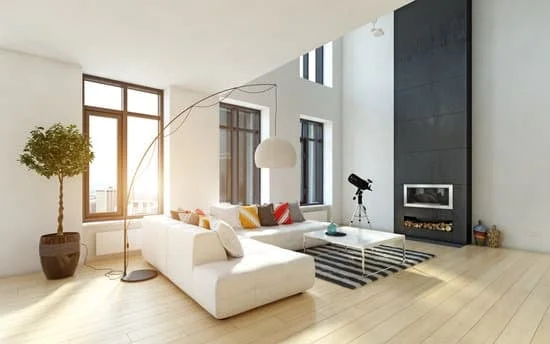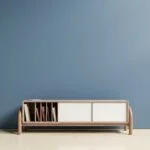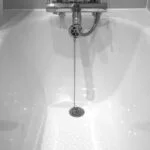Are you looking to spruce up your living space without breaking the bank? If so, then you’ll want to learn how to thrift for home decor. Thrifting has become increasingly popular not only for clothing and accessories but also for finding unique and budget-friendly home decor items. Whether you’re a seasoned thrifter or new to the world of secondhand shopping, there’s something thrilling about the hunt for that perfect piece to add character to your home.
When it comes to thrifting for home decor, there’s a sense of excitement in discovering hidden gems and one-of-a-kind items that you won’t find anywhere else. In this article, we’ll explore the ins and outs of thrifting for home decor, from finding the right thrift stores and identifying quality pieces to budget-friendly DIY ideas for upcycling your thrifted finds.
We’ll also delve into tips for negotiating prices at thrift stores and incorporating those treasures into your home decor aesthetic.
So whether you’re on a tight budget, passionate about sustainable living, or simply enjoy the thrill of the hunt, learning how to thrift for home decor is a valuable skill that can transform your living space while saving you money. Get ready to embrace the unique and sustainable beauty of thrifted home decor as we guide you through this exciting journey.
Finding the Right Thrift Stores
When it comes to thrift shopping for home decor, finding the right thrift stores can make all the difference in the quality and variety of items you come across. Whether you’re a seasoned thrift shopper or a newbie to the world of secondhand shopping, these tips and tricks will help you locate the best thrift stores in your area:
1. Ask for Recommendations: Reach out to friends, family, and coworkers who are avid thrifters and ask them for recommendations on the best thrift stores in your area. They may have insider tips on which stores consistently have great home decor finds.
2. Research Online: Use websites like Yelp or Google Maps to search for thrift stores near you. Read reviews and look at photos from other shoppers to get a sense of the store’s selection and overall vibe.
3. Explore Different Neighborhoods: Don’t limit yourself to just one area when searching for thrift stores. Take the time to explore different neighborhoods in your city or town, as thrift stores in different areas can offer unique and diverse items.
4. Look for Specialty Thrift Stores: In addition to traditional thrift stores, seek out specialty shops that focus specifically on home decor or vintage items. These types of stores often have curated selections that cater to interior design enthusiasts.
By following these tips, you’ll be well on your way to discovering the best thrift stores for scoring beautiful and unique home decor pieces at bargain prices.
5. Plan Your Visit: Before heading out to a new thrift store, check their website or social media pages for any special events, sales, or promotions they may have ongoing.
Identifying Quality Pieces
When it comes to thrifting for home decor, one of the key aspects to consider is the quality of the items you find. Thrift stores can be a treasure trove of unique and one-of-a-kind pieces, but it’s important to know what to look for in terms of quality.
Whether you’re searching for furniture, artwork, or decorative accents, paying attention to certain details can help you identify high-quality items that will stand the test of time in your home.
First and foremost, when on the hunt for quality thrifted home decor, it’s essential to inspect the condition of the item. Look for signs of wear and tear such as scratches, dents, water damage, or loose joints. While some imperfections can add character to a piece, it’s important to assess whether any damage is easily repairable or if it significantly affects the functionality and appeal of the item.
In addition to examining the overall condition, pay attention to the materials and construction of thrifted home decor items. High-quality materials like solid wood, genuine leather, or natural fibers often indicate durability and longevity. When it comes to furniture pieces, check for sturdy construction and joinery methods such as dovetail or mortise-and-tenon joints.
Keep an eye out for brands known for their craftsmanship and quality as well. By honing your ability to distinguish quality pieces from those that may not withstand long-term use in your home, you can ensure that your thrifting finds are worthwhile investments in your decor. Mastering how to thrift for home decor involves patience and attention to detail during your search.
Overall these considerations can help guide your approach as you navigate thrift stores in search of high-quality home decor items that align with your aesthetic preferences and practical needs. With a discerning eye for quality materials, construction, and condition, thrifting for home decor becomes not just a budget-friendly pursuit but also a sustainable and rewarding way to adorn your living space with unique finds that tell a story.
Budget-Friendly DIY Ideas for Upcycling Thrifted Finds
When it comes to thrifting for home decor, one of the most exciting aspects is the opportunity to transform a unique find into something that perfectly fits your aesthetic. Upcycling thrifted items not only allows you to personalize your decor but also gives new life to pre-loved pieces. Whether you’re a seasoned crafter or a beginner, there are plenty of budget-friendly DIY ideas for upcycling thrifted finds that you can try.
One popular DIY project is repurposing old furniture. With a fresh coat of paint and some creativity, an outdated piece of furniture can become a statement piece in your home. Additionally, consider adding new hardware or accents to give it a modern twist.
Another idea is to use fabric remnants from thrifted items such as curtains or tablecloths to create throw pillows or reupholster chairs. Not only will this add a personal touch to your decor, but it’s also an environmentally friendly way to minimize waste.
If you have a knack for crafting, consider turning thrifted glassware or ceramics into eclectic planters or vases with a bit of paint or decoupage. This not only adds character to your space but also allows you to showcase your green thumb in style. And if you’re feeling adventurous, consider deconstructing multiple thrifted items to create something entirely new, such as turning vintage frames into a decorative mirror or creating a unique light fixture from various secondhand materials.
| DIY Project | Description |
|---|---|
| Repurposed Furniture | Transform old furniture with paint and new hardware |
| Fabric Remnants | Create throw pillows or reupholster chairs with thrifted fabric |
| Upcycled Glassware/Ceramics | Turn thrifted items into planters or vases with paint or decoupage |
Tips for Negotiating Prices at Thrift Stores
When it comes to thrift shopping for home decor, one of the most important skills to have is the ability to negotiate prices at thrift stores. While thrift stores already offer affordable prices, there are often opportunities to score even better deals through effective negotiation. Here are some tips on how to successfully negotiate prices when thrift shopping for home decor.
First and foremost, it’s essential to be polite and friendly when negotiating prices at thrift stores. Building a good rapport with the store staff can go a long way in securing a better deal. Engaging in friendly conversation and showing appreciation for the items can make the staff more inclined to consider lowering the price.
Another tip for negotiating prices at thrift stores is to be knowledgeable about the value of the items you’re interested in. Do your research beforehand to understand what similar items are selling for in other places, whether it’s other thrift stores, antique shops, or online marketplaces. This knowledge can give you leverage when proposing a lower price.
Lastly, don’t be afraid to ask for a discount or make a counteroffer if you feel that the initial price is too high. Many thrift store employees are open to bargaining, especially if an item has been on display for a while or if you’re purchasing multiple items. Remember that the worst they can say is no, so it never hurts to ask politely.
Incorporating Thrifted Items Into Your Home Decor Aesthetic
Mixing Old With New
One of the key principles in incorporating thrifted items into your home decor is to strike a balance between old and new pieces. The juxtaposition of vintage, pre-loved items with modern furniture and decor creates an interesting visual dynamic in your space. For example, you can pair a sleek, contemporary sofa with a vintage coffee table or incorporate antique frames into a gallery wall featuring modern art prints.
Showcasing Your Personal Style
Thrifted items offer a one-of-a-kind charm that can reflect your personality and interests. When integrating these finds into your home decor, consider showcasing pieces that resonate with your personal style and tell a story. It could be an antique mirror that adds character to your hallway or a set of retro dinnerware that complements your love for all things mid-century.
Creating Focal Points
Thrifted items can serve as eye-catching focal points in your home decor. Whether it’s a statement piece of furniture or a unique decorative object, these finds can become conversation starters and add an element of surprise to any room. Think about how you can highlight these thrifted treasures by giving them a prominent place in your home, such as displaying vintage vases on open shelves or placing an ornate rug as the centerpiece in a living room.
Learning how to thrift for home decor not only offers endless possibilities for finding hidden gems but also allows you to infuse personality and sustainability into every aspect of your living space. Embrace the thrill of the hunt while also contributing to the reduction of waste by giving pre-loved items new life in your home. With patience, creativity, and an open mind, you can curate a unique and inviting space that reflects both your personal style and values.
Cleaning and Restoring Thrifted Home Decor
Thrifted home decor items can bring a unique and eclectic touch to your living space, but they often require some cleaning and restoration before they can be truly enjoyed. It’s important to know how to properly care for thrifted items to ensure that they both look their best and stand the test of time in your home. Here are some tips and tricks for cleaning and restoring thrifted home decor.
Cleaning Tips
When you bring a thrifted item home, it’s essential to give it a thorough cleaning before incorporating it into your decor. Use gentle, non-abrasive cleaners for delicate items such as ceramics, glassware, and textiles. For wooden furniture or decorative pieces, consider using wood polish or conditioning products to restore their luster. Be sure to thoroughly clean any upholstery on thrifted furniture as well.
Restoration Techniques
In addition to cleaning, some thrifted items may require minor repairs or restoration work. This could include anything from tightening loose screws on a chair to repairing chipped paint on a decorative object. DIY enthusiasts can take the opportunity to learn new skills and tackle these projects themselves, while others may prefer to seek out professional restoration services for more in-depth work.
Preserving Vintage Items
If you’re lucky enough to find vintage or antique pieces while thrifting for home decor, it’s important to take special care in preserving their original charm. Research proper preservation techniques for specific types of items, such as silverware or antique textiles, and consider consulting with experts if you have questions about how best to care for these special finds.
By following these cleaning and restoration tips, you’ll be able to enjoy your thrifted home decor items for years to come. Remember that taking the time to properly care for these pieces not only adds character to your home but also helps reduce waste by giving them new life in your space.
The Environmental and Economic Benefits of Thrifting for Home Decor
Thrifting for home decor not only allows you to find unique and affordable pieces, but it also has significant environmental and economic benefits. By shopping at thrift stores, you are participating in sustainable consumerism and reducing the demand for new products.
This helps to minimize the environmental impact of manufacturing and reduces the amount of waste that ends up in landfills. Additionally, thrift shopping promotes a circular economy by giving previously owned items a second life rather than contributing to the cycle of mass production.
When you purchase secondhand home decor items, you are also supporting local thrift stores and their contribution to the economy. Thrift stores often operate as small businesses, and by patronizing them, you are bolstering your local community and helping to create jobs. The money you spend at thrift stores also stays within the local community, promoting economic stability and growth.
Not only does thrifting benefit the environment and economy, but it also allows individuals to decorate their homes in a more affordable manner. Secondhand home decor items are typically much cheaper than new pieces, allowing individuals on any budget to create a beautiful living space. Whether you’re looking for vintage furniture, unique artwork, or stylish accessories, thrift stores offer a wide range of affordable options that can fit any aesthetic.
Embracing thrifted home decor is not just about finding stylish and budget-friendly pieces; it’s about making a positive impact on both the environment and your local community. By incorporating thrifted items into your home decor, you are contributing to sustainability while creating a space that reflects your personal style and values.
- The environmental benefits of thrifting for home decor
- The economic impact of shopping at thrift stores
- Creating an affordable and stylish home decor aesthetic with thrifted items
Conclusion
In conclusion, thrift shopping for home decor can be an incredibly rewarding and fulfilling experience. Not only does it allow you to find unique, one-of-a-kind pieces that add character and charm to your living space, but it also promotes sustainability and environmental consciousness. By repurposing pre-loved items, you’re contributing to the reduction of waste and supporting a more sustainable way of decorating your home.
The key to successful thrift shopping for home decor lies in knowing where and how to search for the right items. Whether it’s exploring local thrift stores, attending garage sales, or browsing online platforms, there are plenty of opportunities to discover hidden gems at affordable prices. Knowing what to look for in terms of quality, design, and potential for upcycling is crucial in making the most out of your thrift shopping experience.
Embracing thrifted home decor also opens up endless possibilities for creativity and DIY projects. From simple furniture makeovers to crafty upcycling ideas, there are countless ways to breathe new life into secondhand finds.
Additionally, by negotiating prices at thrift stores and dedicating some time and effort into cleaning and restoring items, you can truly make the most out of your thrifting adventures. Overall, with a little patience and creativity, anyone can learn how to thrift for home decor effectively and enjoy all the benefits it has to offer.
Frequently Asked Questions
How Do You Thrift Effectively?
Thrifting effectively involves having a clear idea of what you’re looking for, setting a budget, and being patient. It’s important to inspect items for any damage and not to overlook the potential of an item just because it may need some minor repairs.
What Are Things to Look for in a Thrift Store That Are Worth Money?
When searching for items worth money at a thrift store, keep an eye out for vintage clothing, designer accessories, collectibles, and high-quality furniture or home decor. Look for well-made items with timeless appeal or unique features that could indicate value.
How Do I Flip My Thrift Store Finds?
To flip thrift store finds, start by cleaning and repairing the items if needed. Take quality photos in good lighting and research prices similar items are selling for online. Utilize online platforms such as eBay, Etsy, or local buy/sell groups to market your finds. Providing a detailed description can also help attract potential buyers.

I’m thrilled to be your companion on this exciting journey through the world of home decor and design. With a passion for turning houses into homes and a keen eye for the finer details, I’m here to help you transform your living spaces into beautiful, functional, and meaningful havens.





